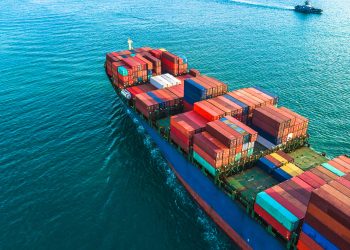Analyst fears overcapacity will upset unstable supply-demand balance
 The high volatility experienced in the container shipping market over the past few years will continue for another four years, according to one analyst.
The high volatility experienced in the container shipping market over the past few years will continue for another four years, according to one analyst.
Analyst SeaIntel said changing market conditions and economic developments had caused the balance between the supply of ships and demand for space on those vessels to become increasingly unstable since 2009.
And until these factors subside, which SeaIntel does not expect to happen for three or four years, the highly volatile conditions experienced in 2009, 2010 and 2011 are predicted to continue.
The analyst blamed several changes in the market for the volatility. Firstly, carriers were still coming to terms with changing trade distances.
In the past 30 years, global demand for container shipping had grown by 8-9% a year, but vessel supply had grown by around 11%, SeaIntel said.
However, this had not resulted in oversupply of capacity, because the excess vessels were absorbed by lengthening sea journeys as production moved further away from final destination.
But production is now largely as far from final destination as it can get in the US and Europe.
A second factor for the volatility is the slowdown of growth on the head-haul direction of trade routes.
SeaIntel said shipping lines could previously rely on faster growth on the head-haul direction to mop up extra capacity. However, with production in the US and Europe now largely outsourced to Asia, growth on the head-haul route had slowed and could no longer be relied on to relieve overcapacity.
Other trends identified by SeaIntel that were increasing volatility were: sudden cascading of vessels onto smaller trade lanes, resulting in battles for market share; carriers increasingly turning to vessel lay-ups to restore freight rates; sudden inventory corrections; and the possibility of slow-steaming coming to an end.
SeaIntel concluded: If capacity is ordered based on the same ordering patterns as in the past 30 years, it is highly likely that too much capacity will be ordered, laying the foundation for a sharp downturn in the market.
We are also facing a market wherein outsourcing of production from particularly US and North Europe is reaching saturation levels.
On top of that, the containerisation process of moving from bulk to container is also reaching saturation levels. This implies that the long-term average container growth of 8-9% annually will likely have to be reduced.
The nature of the inventory correction has the opposite effect. This will result in a sudden capacity shortage, pushing prices upwards sharply.
If this happens while vessels are in lay-up, we see a high likelihood of a replay of the 2010 scenario, with a rapidly increasing market followed by a significant decline.
Source: IFW






























































